By Russ Ouellette
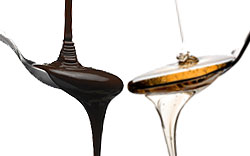 Most pipe smokers are familiar with the terms "casing" and "top dressing", but what are they, how are they used and how are they different from each other?
Most pipe smokers are familiar with the terms "casing" and "top dressing", but what are they, how are they used and how are they different from each other?
First, contrary to legend, most tobaccos that contain Virginia and/or Burley (which is the vast majority of blends) are cased, including some that refer to themselves as "unflavored". This, in essence, can still be true as some casings are as simple as sugared water. Casings are mostly used to lessen the negative qualities of a tobacco. If a Burley has a high pH which can lead to tongue bite, a casing (with or without a flavor) containing some sugar will help to bring the smoke back toward the acidic side, and will reduce the chance of bite. Some Virginias can be harsh or ashy, but with the right casing, that can be mitigated as well. Mostly, though, casings are not used to flavor the tobacco as much as to prepare it for other processing, much as a mild marinade is used to prepare meat for cooking and to tenderize it more than to flavor it.
Casings should be of a compatible type of flavor to the base tobacco. For example- white Burley has a nuttiness about it, and would go quite well with chocolate or molasses. Both of those are commonly used casings for Burley. The casing syrup usually has sugar in it (added to the chocolate, but actually a part of the molasses) which will help to control the higher pH of the Burley.
Casing syrups (or sauces, as they are commonly referred to) are typically water-based. The tobacco to be cased is put into a machine that somewhat resembles a large, elongated clothes dryer, and is tumbled during the process. The casing is then heated and is injected into the chamber and through the use of tumbling, steaming and vacuum pressure, the casing works its way into the leaf.
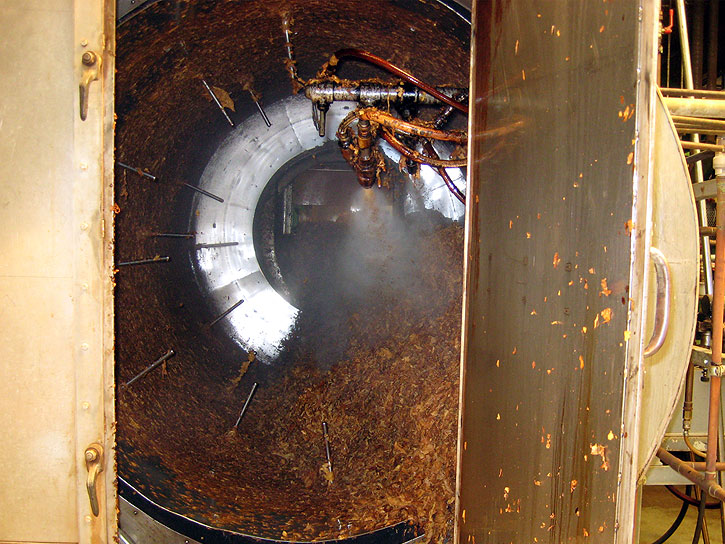
The tobacco is removed from the chamber and moved to a conveyor belt that passes through a drying unit. Heat and air movement bring the moisture level back down to a useable point. The next step will be determined by what the blend is supposed to be. If the final blend is intended to be a (mostly) unflavored blend (like a Virginia, Virginia/Perique or Latakia blend), then the base tobacco is ready to use right after coming out of the drying chamber. The tobacco will be moved to the container in which the finished blend is mixed, combined with the other components, blended and packaged. If the “unflavored” tobacco is a plug, flake or rope, then the process starts with raw leaf (whole leaf that has had the main stem (or “rib”) removed) that will be cased in the above manner. After coming out of the casing machine, leaf may go directly into the press (higher moisture is needed to get a good pressing) or may go through the drying procedure and then re-hydrated to the correct level.
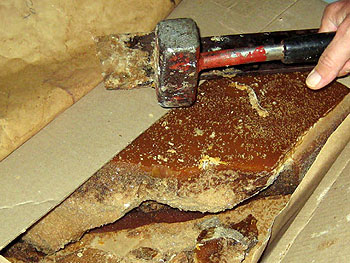 |
 |
If the end product is an aromatic, there’s another process that is normally used, and that is the application of a top dressing. Top dressings are flavorings that are applied at the end of manufacturing (most of the time), and are responsible for most of the pouch aroma and room note of an aromatic pipe tobacco along with the signature flavor of the blend. Top dressings are usually alcohol-based, and a quick examination of the method shows why. When the casing (water-based) is applied, the drying process will bring the tobacco back down to where it belongs, humidity-wise. But at the end of the process, the maker doesn’t want to use heat to finish the job, so by using an alcohol-based flavoring and allowing the tobacco to sit for a day or two, the carrier (the alcohol) will dissipate, or “flash off”, leaving the concentrated flavor behind with little additional moisture.
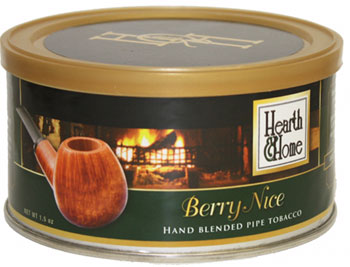 Let me illustrate by using a couple of my Hearth & Home tobaccos as examples. Our Berry Nice is an all-black Cavendish blend with a rather intense medley of berry flavors. We begin with an unflavored black Cavendish which is made by toasting Burley that has been treated with sugar water. The sugars caramelize (which is why toasted black Cavendish smells like brown sugar) and the tobacco turns dark brown to black in color. At this point, the tobacco is fairly dry, almost like corn flakes. In this case, the sugar water is the casing, and the toasted black is the result of casing and drying. The flavors (in this case, strawberry, blackberry, raspberry and currant) are mixed with a carrier and sprayed on the tobacco. The resultant mixture has the kind of moisture that one usually expects of pipe tobacco, has a rich berry aroma in the container and when smoked, and the flavor is a noticeable one, although not quite as apparent as the aroma.
Let me illustrate by using a couple of my Hearth & Home tobaccos as examples. Our Berry Nice is an all-black Cavendish blend with a rather intense medley of berry flavors. We begin with an unflavored black Cavendish which is made by toasting Burley that has been treated with sugar water. The sugars caramelize (which is why toasted black Cavendish smells like brown sugar) and the tobacco turns dark brown to black in color. At this point, the tobacco is fairly dry, almost like corn flakes. In this case, the sugar water is the casing, and the toasted black is the result of casing and drying. The flavors (in this case, strawberry, blackberry, raspberry and currant) are mixed with a carrier and sprayed on the tobacco. The resultant mixture has the kind of moisture that one usually expects of pipe tobacco, has a rich berry aroma in the container and when smoked, and the flavor is a noticeable one, although not quite as apparent as the aroma.
Our Egg Nog uses a mildly cased Burley that is flavored with rum and vanilla, and a black Cavendish prepared in much the same way as Berry Nice, but is flavored with cinnamon and nutmeg. The two tobaccos are then combined to create an aroma and flavor similar to that of the Holiday beverage.
This brings me to my final topic– why don’t most aromatics taste like they smell? This is made a little more clear if you look at flavored cigars. When you smoke a Flavours by CAO, they taste and smell similarly, but most cherry pipe tobaccos don’t taste like cherry. Why? Because, in the case of the cigars, the flavoring is applied to the wrapper, and your tongue touches the top dressing, so you are in direct contact with the flavor. This never happens with a pipe as you are separated from the tobacco by the pipe itself. To taste the flavor, pipe tobacco has to be heavily topped, and you can only use so much top dressing before the tobacco becomes overly moist and sticky.
I hope this gives a better picture of the use of flavorings in pipe tobacco, and I’ll gladly field any further questions if you’d care to leave a comment.
|
Russ Ouellette is the blender/creator of the Hearth & Home series of tobaccos for Habana Premium Cigar Shoppe and www.pipesandcigars.com in Albany, NY. He has been a pipe smoker and blender for over 30 years, and enjoys feedback from the pipe smoking public. You can reach Russ at russo@pipesandcigars.com or by calling 1-800-494-9144 on Monday, Wednesday and Thursday from 9 am to 5 pm and Friday from 1 pm to 5 pm. |




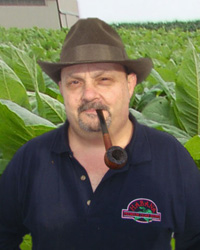
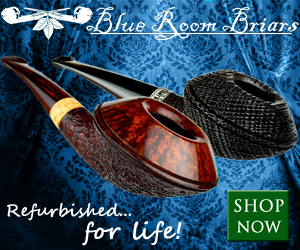


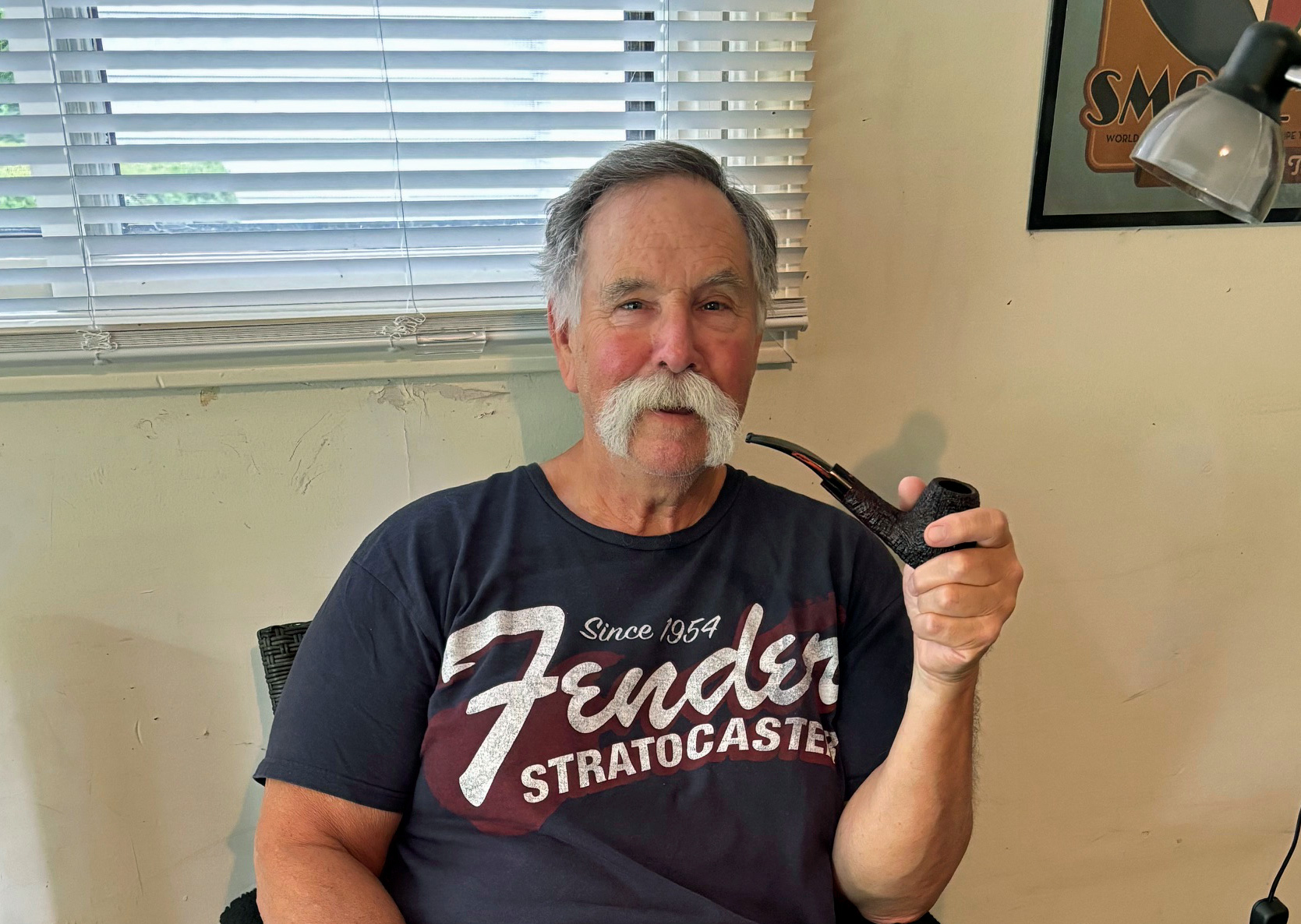
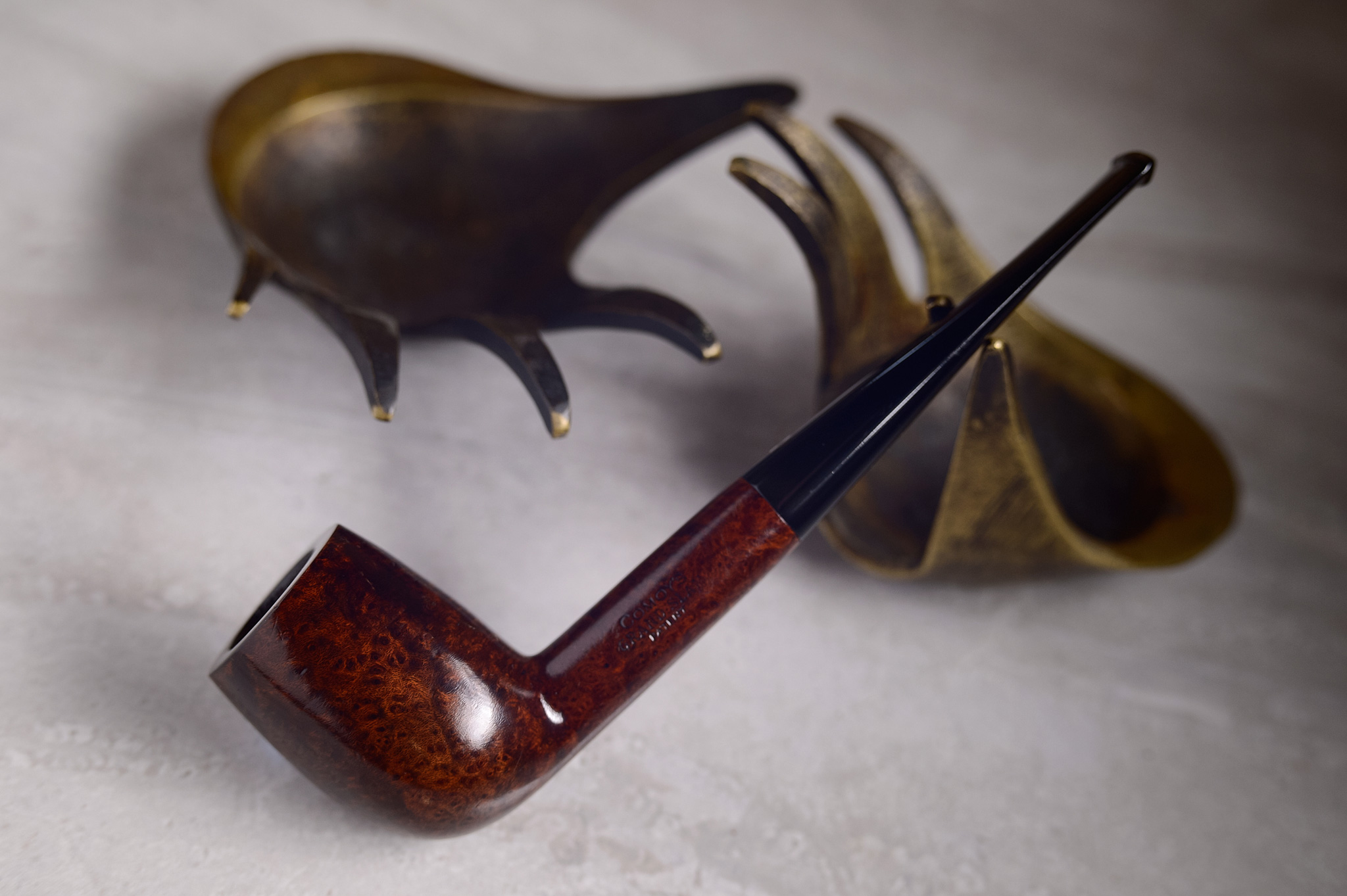

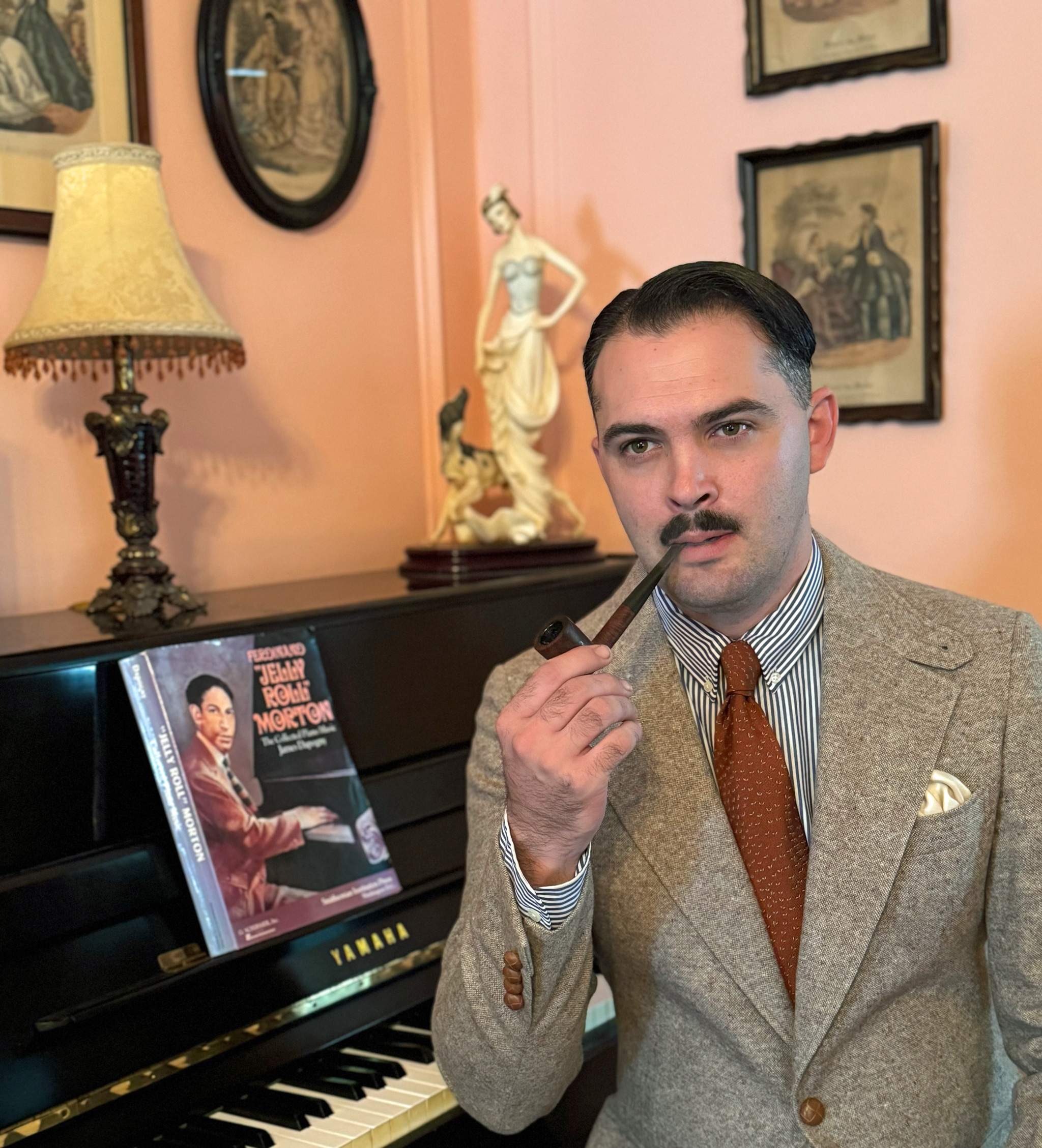
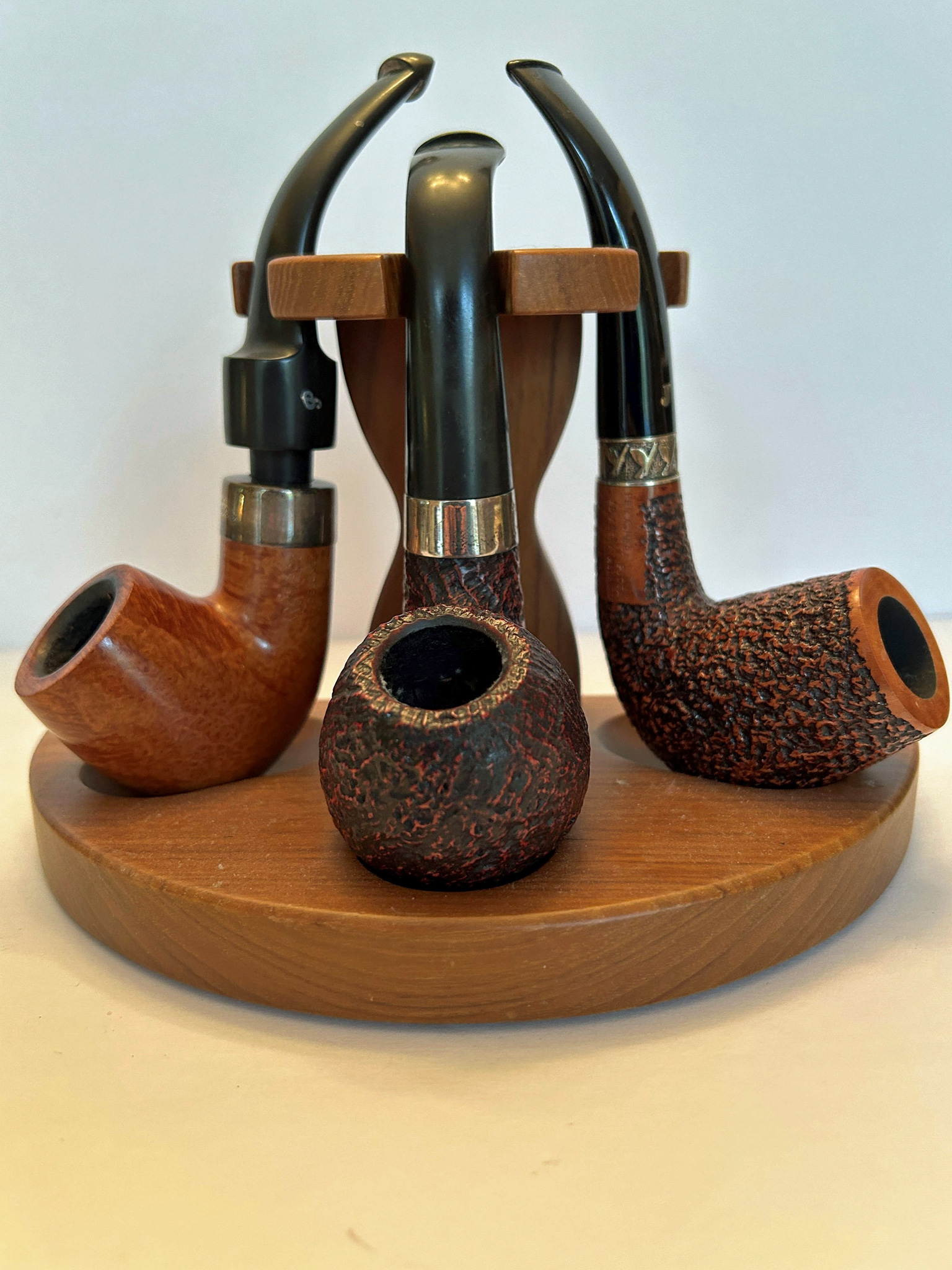
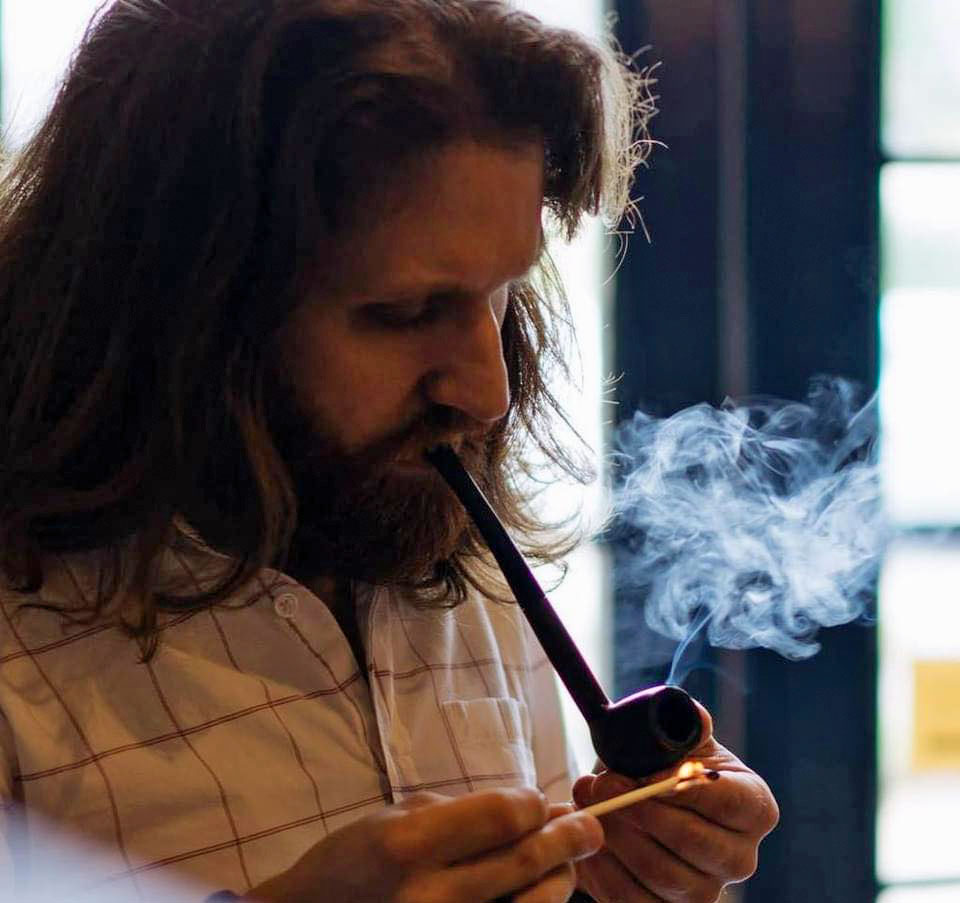

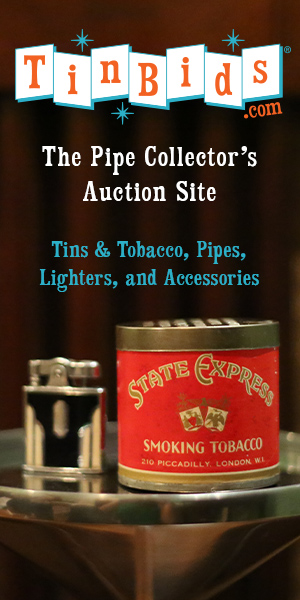

Very informative indeed…thanks for this excellent write up!
Very good article
I love learning new things Russ – it adds a lot to my enjoyment; thanks.
“To taste the flavor, pipe tobacco has to be heavily topped, and you can only use so much top dressing before the tobacco becomes overly moist and sticky.”
I guess this ststement differentiates a good aromatic blend from the often derided “Aromatics”?
I’m glad that you touched on the whole “my aromatic doesn’t taste like it smells” issue.
Very interesting article. I enjoyed reading it.
Again an excellent article. Thanks Russ.
Excellent article, Russ. I tend to use the terms interchangeably even though I know I shouldn’t.
Outstanding article!
Great article Russ!
I’m going to give it a second read…
Just to soak it all in. 🙂
That was a very interesting article Russ!
Another great article. Thanks Russ.
great read thanks for that
Cool! Never really knew how that worked. Always informative Russ!
This article is MUST reading for any of the people who are trying to grow their own tobacco.
Excellent article. Great information.
You learn something every day…….Thanx Russ
Russ….Can the consumer top his or her own tobacco?
People have been topping their own tobacco for years, usually using liquor. They real key is to use something with an alcohol base, so liquor and extracts work the best. In the case of liquor, it can used straight, but extracts should probably be thinned with vodka or water as the flavor might be too concentrated. To do it, just add the flavor, mix thoroughly and let it sit in an open container, turning every few hours until the moisture level feels right.
Russ
TY for your response.
Reminds me of the days I would steal some of my Dad’s rum and spray it on the tobacco I would get from Drug Fair…yeah..that was a couple of minutes ago..
Thanks Russ for the schooling – Drug Fair!? man am I gettin old!LOL!
Thanks so much for the article !!
Very interesting, straightforward and informative. I love Egg Nog and recently received some Berry Nice. Infusing Egg Nog with some Flor de Cana Nicaraguan Rum is one of my hobbies, and it bonds well with this particular blend.
Thanks Russ, your article really helped me understand! My concern with casings and toppings is how often they contain laboratory-made chemicals that mimic natural flavors? I really don’t want to burn artificial chemicals if possible. Natural flavorings are ok with me, but I am concerned that artificial flavorings can cause health problems that we don’t yet know about. I know most pipe tobaccos contain PG (and I think this is probably benign), but perhaps other chemicals are used? There is a “famous” virginia tobacco I smoke that gives such a blast of lemon sweetness midbowl, that I have to believe that it is artificially flavored.
Anyway, my two cents.
Russ, I have several questions:
-I recall reading somewhere that most pipe tobaccos have something added to prevent mold or other decay to the leaf. Is this true? And if so, is it used universally and does it impart any flavor?
-Is it or was it ever true that pipe tobaccos blended in Great Britain have no flavorings not indicated on the packaging?
-Are there any blends that are not cased? Isn’t this what is purported to be the case with GL Pease “Union Square” blend?
-Are casings also used in the production of better cigars?
-I had assumed that latakia was treated by exposing the leaf to burning wood, much in the way some scotch is “cured” over burning peat. Am I mistaken, and are orientals and latakia leaves also cased?
I can’t help but feel deceived by the idea that unflavored pipe tobacco is a myth. Sugar water is not Vanilla Fudge, but it is certainly still an ingredient added to alter the flavor of the leaf. Also, while sugars are complex organic molecules, when dissolved in water, sugar does not alter the pH at all. Pure water is neutral pH, which would tend to lower the pH of an alkaline compound if added in sufficient concentration, but that has nothing to do with the inclusion of sugar. Am I missing the boat, or is this really just a case of “a spoonful of sugar helps the medicine go down”??
Thanks in advance for sharing your thoughts!
As far as artificial flavorings go, there are some that I know of such as banana oil, which doesn’t come from bananas, but for the most part, artificial flavors are still extracted from the real source. For example: vanillin is classified as an artificial flavor, but it is derived from vanilla. A lot of flavors are considered artificial because of how the flavor is extracted, such as using alcohol.
Other chemicals that may be used are anti-fungals, which can be compounds developed for the purpose, or might be as simple as vinegar, and humectants like PG or Sorbitol (sweetener and humectant).
The lemon you taste is more likely from using yellow Virginia than a flavoring, as added flavors rarely have that big of an impact.
Humectants and anti-fungals are not universally used, but they are quite common. Certain chemicals will affect flavor, such as Sorbitol which will sweeten the blend.
As far as the old UK regulations go, under the old rules, liquors were allowed to be use as flavorings, but little else.
Casings are usually limited to Virginia and Burley, but there are very few blends that don’t have one or the other.
The flavorings that are used on cigar leaf would actually be more like top dressings, and used, almost exclusively, on the wrapper so it can be tasted when the smokers tongue touches the wrapper leaf (this goes for flavored cigars and ones that use a more subtle topping). The binder and filler aren’t cased or topped, as it would have minimal impact on the stronger tasting cigar leaf.
Orientals and Latakia are fragrant and flavorful enough that casings and toppings are generally not needed.
I believe that the reduction in pH is from the combustion of the sugar, but I can’t verify that. The effect may be more that the sweetness offsets some of the bitterness of the leaf.
Russ
Thanks again, Russ. I guess the only way to taste pure Virginia is to grow it yourself?!
Thanks Russ, I appreciate the additional info. Best wishes
Thanks Russ for the info about flavorings. Very helpful (and reassuring)!
@laufenstoc – “Thanks again, Russ. I guess the only way to taste pure Virginia is to grow it yourself?”
When I was a kid I found a chunk of chocolate hidden on the top shelf of the pantry. I took a big bite out of it and it was absolutely awful. That was the day I learned what baking chocolate was. There is no sugar in it, and it tastes like crap.
–
I think you would find the same result with “pure Virginia” tobacco.
@Kevin-Your experiences with baker’s chocolate and crap aside, I don’t believe your conclusion is supported by the premises. Having tasted organically grown and untreated whole leaf Virginia, pressed and cut into flakes, I can tell you it was really quite fabulous. It was briefly available and actually being sold at the Chicago Pipe Show maybe 4 years ago, as a kit: tobacco, and equipment to press it into blocks, etc. Perhaps untreated, it doesn’t lend itself to mass production and extended shelf life? I really don’t know. Also, as I mentioned above, GL Pease “Union Square” is alleged to have no topping nor casing, and I find it to be a fine smoke. Maybe black coffee would be a better analogy than your baker’s chocolate? I don’t take sugar in my coffee, either 😉
@laufenstoc – Thanks for your response. I stand corrected. You are correct that Union Square has no casing, and it is an excellent blend. I’ve reviewed it myself. Yes, there are Virginia pipe tobaccos without casing. It is quite rare though. Many of the cased Virginias need to be cased, and some probably don’t. And many of them, the average consumer wouldn’t have the advanced tasting skills to know the difference. That’s really the points I was trying to make. You may be an individual that does have a very highly developed sense of taste and smell. I guess that can be both a blessing and a curse.
I remember chatting with Greg Pease once in Chicago and being surprised to learn, as Russ points out here, that nearly all Virginia pipe tobaccos are cased. Somehow I equated casing of any sort with Swisher Sweet Cigars and Drug Store pipe tobaccos. So the snob in me thought that this was an egregious contaminant…in any form. You know, as the politicians are fond of saying, like putting lipstick on a pig. But in fairness, I am sure that other than Union Square, most of my favorite VAs are cased in some fashion, and I wouldn’t suddenly change my fondness for them. I had to come to understand that, sort of like the baker’s chocolate analogy, the plain tobacco generally needs something to bring out its best qualities, like a dash of salt on your vegetables.
But mostly, having been enchanted with the organic pressed (presumably untreated) VA leaf I mention above, and the Union Square, I am so curious to taste quality leaf in its unadulterated form. More to refine my palate than to brag about it. Does anyone know of other VA or VAPer blends that are prepared without any “punching up” at the factor?? And thanks all for a great thread!
Excellent! Highly informative! Thanx!
Thanks for a great article that dispels some of the myths and wives’ tales concerning the ‘tobacco purist debate’. Excellent ensuing discussion too!
This article is very informative and clarified a lot of points for me. Thanks Russ.
This was excellent. I have been growing tobacco in my back yard for two years now. During that time I frequently search for casing techniques and recipes. They are not easy to come by as nobody wants to give up their “secrets”. This article was about the most informative(in two years of searching) that I have found, so I thank you.
All I want to do is find a good recipe for adding natural sugars from honey, molasses, cane sugar, etc… I don’t want to add any other flavors, I just want to help the natural flavor come out a bit more. Any suggestions?
Also, I have a batch of newly air dried burley leaves and I think I will try making black Cavendish with some of it. Any tips?
To the people that were speaking about the flavor of uncased tobacco being good or not. I think uncased tobacco tastes great. But I have never smoked commercial pipe tobacco so I have nothing to compare it to. I went from smoking cigarettes to growing/rolling my own. I eventually started smoking a pipe because it is so much easier than rolling cigarettes. I have never added anything to the tobacco and I grow it organically without chemicals of any kind. While it tastes great to me, I have two friends that are used to commercial pipe tobacco and they do not like the uncased tobacco very much at all. Although both have been smoking a single brand for many years and don’t really like anything else anyway. So I’m not sure how reliable their opinions are.
Anyway, thanks for the informative article.